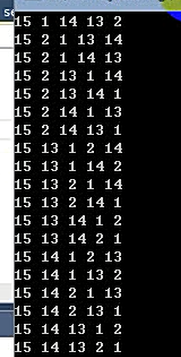版权声明:本文为博主原创文章,未经博主允许不得转载。 https://blog.csdn.net/qq_35119182/article/details/87900476
目录
#include <iostream>
#include <vector>
#include <string>
#include <algorithm>
using namespace std;c++对自定义数据类型进行排序
怎么排序呀,可以使用运算符重载+stl容器和sort排序对自定义的数据类型排序。
struct student {
int course;
int name;
student(student &s){ ... } // 深拷贝
bool operator < (const student &s2){ // < 运算符重载
return this->score < s2.score;
}
}
int main(){
vector<student> s{{100,"songchao"},{99,"xiaochao"}};
partial_sort(s.begin(),s.begin()+1,s,end()); // 这里为什么不用sort呢,因为short只能是对数组进行排序,例如list,set底层分别是链表和红黑树
for(auto i:s){
cont << i >>endl;
}
}sort 高级用法
int a[3]={2,1,9};
sort(a,a+3,[](int a.int b){ return a<b;}); // < > 的修改编程 从小到大,从大到小
// 1 2 9
//取最大值
*min_element(a,a+3); // 1
//取最小值
*max_element(a,a+3); // 9复杂数据类型实现比较最大最小 max/min
int num1 = max(100,90);
cout << max((char*)"123",(char*)"234",[](const char *str1,const char* str2)->bool { return strcmp(str1,str2)<0:1?0; });输入:234
非基本数据类型都需要运算符重载排序
归并排序
首先依赖有序
int a[4]={2,4,1,9};
int b[2]={1.22};
sort(a,a+4,[](int a,int b){ return a>b;});
sort(b,b+2,[](int a,int b){ return a>b;});
//归并排序 --前提是要有序
merge(a,a+4,b,b+2,c,[](int a,int b){ return a>b;}); // 拼接
for(auto i:c){
cout << c <<endl;
}
监测数据是否包含 includes()
int a[4]={2,4,1,9};
int b[2]={1.9};
bool check = includes(a,a+4,b,b+2);
if(check){
cout << "包含";
}else cout << "不包含";
// 输出:包含合并,但是不去重复set_union 函数
int a[4]={2,4,1,9};
int b[2]={1.9};
int c[15]{0};
set_union(a,a+4,b,b+2,c);
for(auto i:c){
cout<<i<<endl;
}prev_permutation 随机打乱 对调元素排序,两两交换--类似冒泡排序。 做排列,有序不做排列
可以用来套别人密码,可出现n种方式。
next_permutation  组合
组合
自动对字符串排序
char *s1 = "xxoo";
char *s2 = "hello";
bool res = lexicographical_comare(s1,s1+strlen(s1),s2,s2+strlen(s2)); //自动对字符串排序
if(res){
cout << "s1在s2前面"<<endl;
}else
cout << "s1在s2后面"<<endl;
// 输出: s1在s2后面快速排序 nth_element 函数
随便数组中找一个数据,将大于它的放右边,小于它的放左边。
int a[4]={2,5,99,1};
nth_element(a,a+1,a+4); // 以a+1 对应数组5为中心,小于向左,大于向右
for_each(a,a+4,[](int x){ cout << x <<endl; });c++11 新增算法
int a = min({1,2,3}); // 1
int b = max({1,2,3});// 3 专门处理了大括号
auto it = minmax({1,2,3});
cout<<it.first<<endl; 最大
cout<<it.second<<endl; 最小
all_of // 全部满足
any_of // 至少满足一个
none_of // 一个都不满足
vector<int> s{1,3,4};
bool res = all_of(s.begin(),s.end(),[](int i)->bool { return i%2==0; }); // 条件自己定义:判断有没有偶数
if(res){
cout<<"全部满足"<<endl;
}else
cout<<"不满足"<<endl;
压缩容器
find_if
find_if_ont
copy_if
例子:1 2 3 4 5 个数我现在只要奇数,1 3 5那么久只需要 三个存储空间就可以了那么怎么实现呢
vector<int> v1{1,2,3,4,5};
vector<int> v2(v1.size());
auto it=copy_if(v1.begin(),v1.end(),v2.begin(),[](int i){ return i %2; } );
v1.resize(distance(v2.begin(),it)); // 压缩容器